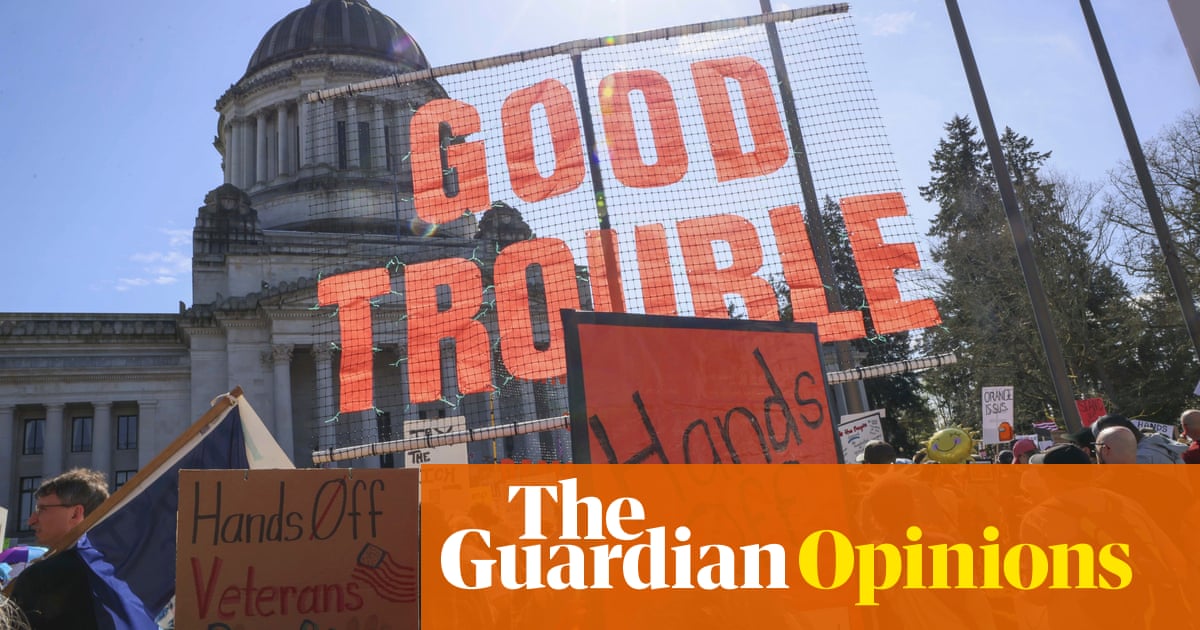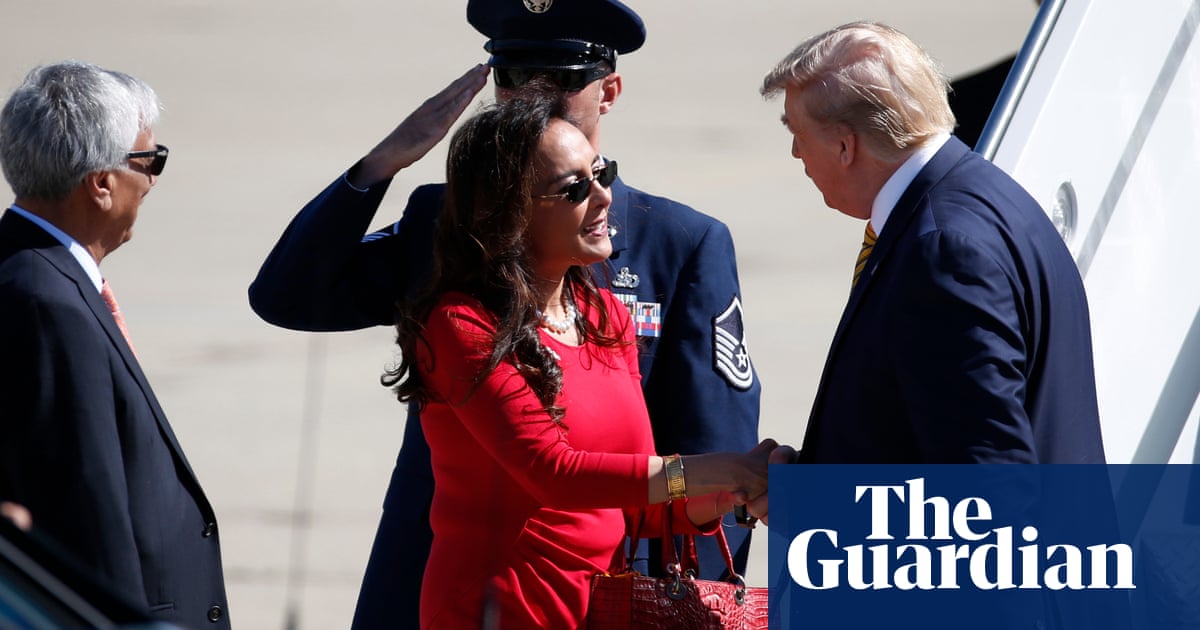For US foreign policy, Donald Trump’s first 100 days in office were the weeks when decades happened.
In just over three months, the US president has frayed alliances that stood since the second world war and alienated the US’s closest friends, cut off aid to Ukrainians on the frontlines against Vladimir Putin, emboldened US rivals around the world, brokered and then lost a crucial ceasefire in Gaza, launched strikes on the Houthis in Yemen and seesawed on key foreign policy and economic questions to the point where the US has been termed the “unpredictable ally”.
The tariffs Trump has unleashed will, if effected, disrupt global trade and lead to supply chain shocks in the United States, with China’s Xi Jinping seeking to recruit US trade allies in the region.
The pace of the developments in the past 100 days makes them difficult to list. Operating mainly through executive action, the Trump administration has affected nearly all facets of US foreign policy: from military might to soft power, from trade to immigration, reimagining the US’s place in the world according to an isolationist America First program.
“The shake-up has been revolutionary, extraordinary. It’s upended 80-some years of American foreign policy,” said Ivo Daalder, president of the Chicago Council on Global Affairs and a former ambassador to Nato.
The Trump presidency has ended the relative peace in the western hemisphere since the end of the second world war underwritten by US economic, military and diplomatic influence, Daalder said.
“The foundation of the Pax Americana was trust, and once you break trust, it’s extraordinarily difficult to restore,” he said. “And restoring trust – trust in America, trust in American institutions, trust in American voters – it takes a long time to rebuild.”
The US’s key foreign policy and national security making institutions are in crisis. The Pentagon is mid-meltdown under the leadership of Pete Hegseth, whose erratic and unsteady leadership has been reflected in score-settling among his senior staff, while a leaked Signal chat embroiled the national security adviser, Mike Waltz, and others in scandal. The state department under Marco Rubio is undergoing a vast shake-up, and the US’s diplomats are being sidelined in favour of envoys such as Steve Witkoff with little background in foreign policy. Critics say the gutting of USAID will cut back on US soft power for generations.
“There’s no better way to get us into a war, perhaps a catastrophic war, than essentially poking out your eyes and numbing your brain, and you’re left with Donald Trump and a few people sitting in the White House winging it, and they’re not competent to wing it,” said Steven Cash, a former intelligence officer for the CIA and Department of Homeland Security, and the executive director of the Steady State, an advocacy group of former national security professionals. “And so we’ve seen that with the tariffs. We’ve seen that with Nato. We’ve seen that with Ukraine, and we’re gonna see a lot more of it.”
After assuming office in 2021, Joe Biden declared: “America is back.”
“The world now knows America is not back,” Daalder said. “America is gone again.”
In a recent interview with the Zeit newspaper, Ursula von der Leyen, president of the European Commission, expressed similar sentiments, saying: “The west as we knew it no longer exists.”

In Munich, JD Vance delivered a landmark speech openly pandering to Europe’s far right, accusing European leaders of “running from their own voters” and saying: “America can do nothing to help you.”
A backlash has begun. Last month the EU presented an €800bn ($913bn) plan on the future of European defense, a putative step in what would be a herculean task to overcome internal divisions and onshore European defense manufacturing. The UK and other US allies have considered other efforts, such as limiting intelligence-sharing with the US. “We still need America now, but there is a vision [of a time] when we won’t any more,” said one European diplomat.
Meanwhile, the Trump effect is beginning to sway elections as well – though not as he might hope.
In the western hemisphere, Trump has terrorised US neighbours and tacitly declared what some have compared to a new Monroe doctrine, saying the White House planned to “take back” the Panama canal and annex Greenland, while regularly calling Canada the future 51st state.
In an extraordinary bit of election-day meddling, Trump wrote a social media post suggesting that he was on the ballot in Canada’s vote, repeating that Canada should become the 51st state in order to avoid tariffs and reap economic awards.
Canadians responded by duly electing the liberal candidate Mark Carney, completing a 30% swing in polling that has largely been explained by opposition to Trump’s tariff war and territorial menaces.
In Europe, populist parties seen as Trump’s ideological allies are also on the defensive. While Trump was popular in terms of his ideological and anti-woke agenda, the trade war has made him “quite toxic, just in the last month or two, with a lot of the populist voting bases”, said Jeremy Shapiro, the research director of the European Council on Foreign Relations and a former special adviser to the assistant secretary of state for Europe and Eurasia.
Nowhere has the shift in US foreign policy been felt more acutely than in Ukraine, where the sudden cutoff in US military and intelligence sharing confirmed the Trump administration’s goals of pressuring Ukraine to accept a deal with the Kremlin, rather than the other way around. Those frustrations boiled over into an Oval Office meltdown fueled by Vice-President JD Vance that one former US official close to the talks called “disgraceful”.
Trump has swung wildly on the war, on certain days targeting Volodymyr Zelenskyy as a “dictator” and then quickly pivoting to call out Putin for continuing to rain down missiles on Ukrainian cities. His theatrics have produced symbolic moments, including a sudden recognition that “maybe [Putin] doesn’t want to stop the war” after speaking with Zelenskyy this weekend in the baptistry of St Peter’s Basilica. But in terms of hard results, Trump has not fulfilled a promise to end the war within 24 hours or produced a clear path to peace many months later.

The Russians have said they largely tune out what he says in public.
“We hear many things coming from President Trump,” said Sergey Lavrov, the Russian foreign minister, during a television appearance this weekend. “We concentrate, as I said, on the real negotiations which President Trump supports and instructed his people to continue to engage in these negotiations.”
Key among those people is Witkoff, a neophyte diplomat who has spent hours in conversation with Putin, often with no other adviser present. One person close to the Kremlin said that Witkoff was viewed as a reliable negotiator in Moscow with “a chance to make an agreement”, but added: “There is a chance it will pass by.”
Much of the burden of international diplomacy now rests on Witkoff, who is also running point on other key negotiations. Trump has tasked him with reaching a deal to prevent Iran from obtaining a nuclear weapon, in effect renegotiating the Joint Comprehensive Plan of Action that he scuttled in 2018. Both the US and Iran have played up the talks, although “differences still exist both on major issues and on the details”, the Iranian foreign minister, Abbas Araghchi, told state television this week.
And then there is the Middle East, where the Trump administration scored its greatest early success by negotiating a ceasefire in Gaza but then failed to prevent its collapse, with Israel cutting off new aid to Gaza as the fighting continues.
“There now seems to be less focus on ending the devastating conflict,” wrote Stefanie Hausheer Ali, a non-resident fellow at the Atlantic Council’s Rafik Hariri Center and Middle East Programs. “Trump’s threat in February to Hamas to release the hostages or ‘all hell is going to break out’ has, in practice, meant Israel restarting the war and blocking humanitarian aid from entering Gaza. Without an alternative to Hamas rule, the militant group may hang on and continue to fight as an insurgency, replenishing its ranks by recruiting desperate people.”
Trump’s most extreme remarks have turned out to be bluster: he stunned the world when he claimed that he would turn the Gaza Strip into beachfront condos and said that the local Palestinian population would be forcibly removed. Months later, the initiative is largely forgotten.
While attempting to close three landmark negotiations at once, the Trump administration has also launched a trade war with the entire world, establishing sweeping tariffs on all foreign imports before abruptly reversing course and cutting tariffs to 10% save for those against China.
With so many major efforts ongoing, observers say that the government is largely paralysed to deal with smaller but still crucial issues in foreign policy and national security. As part of a blanket ban on refugees, tens of thousands of Afghans who assisted US troops against the Taliban are left waiting for relocation to the United States, a promise that was extended by previous administrations.
“The lack of clarity and the chaos are the things that are causing so much pain,” said Shawn VanDiver, the founder and president of #AfghanEvac, a group that works with the state department to help resettle Afghans.
He said he was critical of both the Biden and Trump administrations for failing to relocate the tens of thousands of Afghans who were far enough along in the vetting program to be relocated before Trump came into office.
“The truth is, is that when America makes a promise, you should be able to trust our word,” he said. “If our flag waving over an embassy in Tunisia or Baghdad or Kabul, or Kyiv doesn’t mean this is the place where there’s truth, where there’s justice ... well, then what are we even doing here?”

 German (DE)
German (DE)  English (US)
English (US)  Spanish (ES)
Spanish (ES)  French (FR)
French (FR)  Hindi (IN)
Hindi (IN)  Italian (IT)
Italian (IT)  Russian (RU)
Russian (RU)  5 hours ago
5 hours ago
























Comments